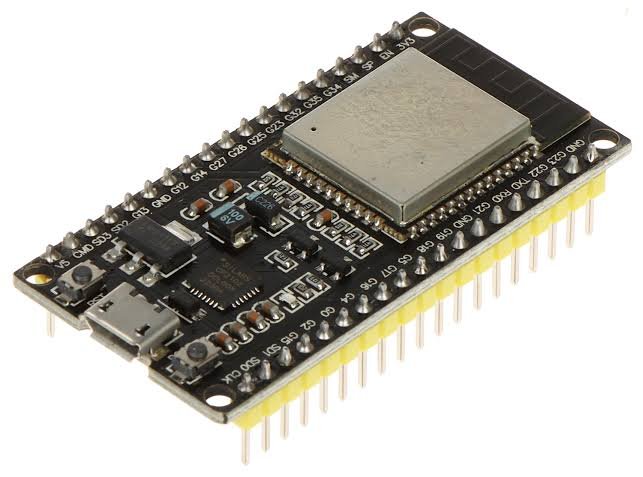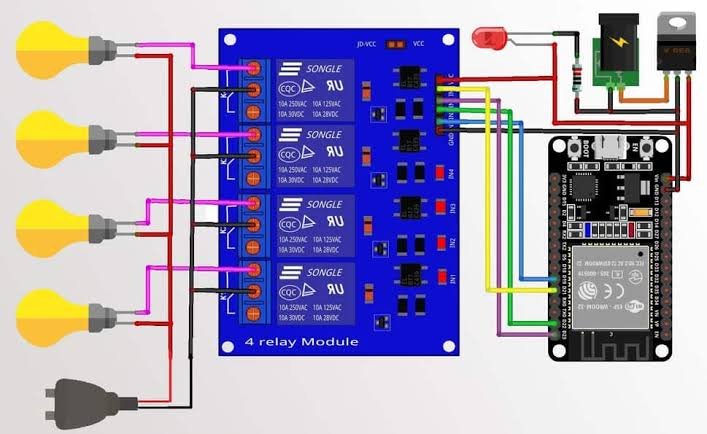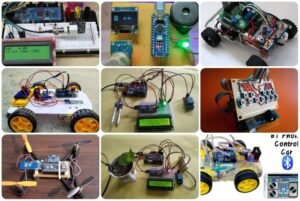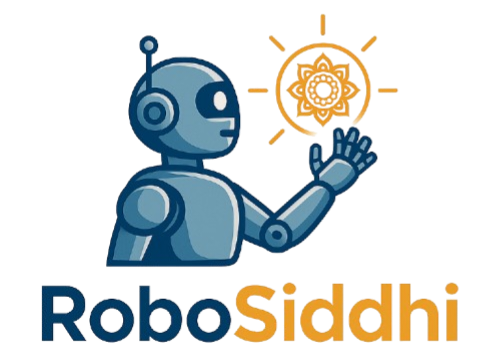
Introduction to ESP32
The ESP32 microcontroller, developed by Espressif Systems, has garnered attention in the tech community for its impressive range of features that position it as a preferred choice for innovative projects. One of the defining characteristics of the ESP32 is its dual-core processing capability, which allows it to handle multiple tasks simultaneously. This means that developers can run complex applications with ease, making it ideal for real-time data processing and multi-threaded designs.
Another major advantage of the ESP32 is its extensive connectivity options. It integrates both Wi-Fi and Bluetooth capabilities, which allows for seamless communication with various devices and networks. This dual connectivity not only expands the potential applications of the microcontroller but also supports the creation of IoT solutions. Whether it’s connecting sensors to the internet or enabling smart device communication, the ESP32 delivers exceptional performance.
In addition to its processing power and connectivity, the ESP32 features a rich ecosystem of tools and libraries that facilitate development. Programmers can choose from multiple programming languages, including C, C++, and MicroPython, making it accessible for both beginners and experienced developers alike. The availability of a robust software development environment encourages creativity and innovation, allowing more people to bring their ideas to life.
Overall, the ESP32 stands out in the crowded field of microcontrollers due to its combination of performance, connectivity, and flexibility. As technology continues to advance, the applications of the ESP32 are boundless, inspiring countless innovative projects that leverage its unique capabilities. As we delve deeper into specific projects, the versatility of the ESP32 will undoubtedly shine through, showcasing its potential to revolutionize various industries.
Why Choose ESP32 for Innovative Projects?

The ESP32 microcontroller has gained significant attention among hobbyists and professionals in recent years, and for good reason. Its affordability is one of the primary factors making it a preferred choice for innovative projects. Compared to other microcontrollers with similar feature sets, the ESP32 is competitively priced, allowing creators to develop complex applications without straining their budgets. This financial accessibility encourages experimentation and creativity, making it an ideal component for both entry-level enthusiasts and seasoned developers.
Another key attribute of the ESP32 is its versatility. It is equipped with integrated Wi-Fi and Bluetooth capabilities, allowing users to connect to the internet or interface with other devices easily. This dual connectivity opens up a wide array of possibilities for applications, ranging from Internet of Things (IoT) devices to smart home solutions. The inclusion of rich peripheral interfaces, such as GPIO, SPI, I2C, and PWM, adds to its functional flexibility. Hobbyists and developers can thus customize their projects to meet specific requirements without the need for additional hardware.
The ease of programming the ESP32 further contributes to its popularity. With comprehensive support for the Arduino IDE and other programming environments, users can quickly get started with minimal learning curves. This user-friendly aspect is particularly appealing for beginners who are looking to dive into electronics and IoT. Additionally, the transition from Arduino projects to ESP32 is often seamless, facilitating a smooth upgrade path for existing projects.
Lastly, the strong community support surrounding the ESP32 is invaluable. Various online forums, tutorial websites, and open-source projects offer a wealth of resources for troubleshooting and gaining inspiration. This extensive community engagement not only fosters collaboration but also enhances learning opportunities, making it easier for innovators to find solutions and share ideas. Thus, as a microcontroller, ESP32 provides a remarkable foundation for diverse innovative projects.
Project Ideas Overview
The ESP32 microcontroller has emerged as a powerful tool for hobbyists and professionals alike, enabling a wide range of innovative projects across diverse fields. Its versatility is particularly evident in key categories such as home automation, IoT applications, robotics, wearables, and environmental monitoring. These areas not only showcase the capabilities of the ESP32 but also present endless opportunities for creativity and technical exploration.
In the realm of home automation, the ESP32 allows users to control lighting, heating, and security systems remotely. By integrating this microcontroller, developers can create smart home solutions that improve energy efficiency and enhance overall convenience. Projects can range from simple smart bulbs to comprehensive systems that monitor and manage entire households through mobile applications.
For IoT applications, the ESP32 stands out for its wireless connectivity and robust processing power, making it ideal for developing smart devices that communicate seamlessly with one another. These projects can incorporate sensors to track data such as temperature, humidity, and air quality, facilitating smarter cities and more efficient resource management.
When it comes to robotics, the ESP32 can serve as the brain of autonomous robots and drones. Its ability to process complex algorithms and relay data in real-time empowers creators to design systems that can navigate, adapt, and perform various tasks without human intervention. Robotics projects featuring the ESP32 often leverage multiple sensors for enhanced functionality.
Wearable technology is another exciting application, with the ESP32 enabling the creation of smartwatches and fitness trackers that collect health data while providing connectivity to smartphones. This intersection of technology and health monitoring represents a growing interest in personal data analytics.
Lastly, environmental monitoring projects utilizing the ESP32 can contribute to sustainability efforts. By deploying sensor networks that monitor air and water quality, users can gain insights into environmental conditions and make informed decisions for preservation and improvement.
Home Automation Projects

The ESP32 microcontroller has emerged as a powerful tool in the realm of home automation, enabling users to create innovative projects that enhance convenience, security, and energy efficiency. With its integrated Wi-Fi and Bluetooth capabilities, the ESP32 allows seamless connectivity and control over various smart devices within a household. This section explores several creative applications that can be developed using this versatile platform.
One of the most popular home automation projects is the smart lighting system. By integrating the ESP32 with smart bulbs or LED strips, users can control lighting remotely through a smartphone application or voice assistants. This setup not only offers the convenience of adjusting lighting from anywhere but also contributes to energy savings by allowing homeowners to schedule lighting based on occupancy and time of day.
Another compelling project is the automated door locking system. This can be accomplished by interfacing the ESP32 with electronic locks, facilitating remote locking and unlocking capabilities through a mobile app. Additionally, integrating sensors can enhance security by notifying users if a door is left open or if unauthorized access is detected. Such a system considerably elevates the safety of a residence.
Temperature monitoring is yet another significant application of the ESP32 in home automation. By utilizing temperature and humidity sensors, users can monitor indoor climate conditions in real time. This information can be utilized to manage HVAC systems more efficiently, optimizing energy consumption while ensuring a comfortable living environment. Moreover, automated alerts can be set up to inform homeowners of any drastic changes in temperature, allowing for prompt action to prevent damage or discomfort.
In conclusion, the ESP32 serves as a robust foundation for a variety of home automation projects. From intelligent lighting solutions to enhanced security systems, these innovations provide users with greater control and efficiency in their everyday lives, demonstrating the endless potential of this microcontroller in modern home automation.
IoT Applications with ESP32

The ESP32 microcontroller has become a popular choice for developers and hobbyists looking to build Internet of Things (IoT) applications. Its built-in Wi-Fi and Bluetooth capabilities allow for seamless integration of various devices, paving the way for innovative projects that can connect and communicate in real-time. One notable application is remote sensors, which can monitor environmental conditions such as temperature, humidity, and air quality. These sensors, powered by ESP32, can transmit data wirelessly to a central server, enabling users to gather insights from anywhere in the world.
Another interesting use case for ESP32 is in data logging projects. By tapping into its processing power and connectivity features, users can create dependable systems to collect, store, and analyze data over time. From monitoring energy consumption in residential homes to tracking weather patterns, the flexibility of ESP32 allows it to serve as a robust foundation for varied data logging applications. By connecting multiple sensors to a single ESP32 module, users can create comprehensive datasets that contribute to informed decision-making and resource optimization.
In the realm of smart agriculture, the ESP32 microcontroller demonstrates its potential remarkably. Farmers can deploy ESP32-based solutions to monitor soil moisture levels, manage irrigation systems, and even control the microclimate in greenhouses. By utilizing IoT devices powered by ESP32, agricultural practices can be linked through a network, providing real-time monitoring and insights that can lead to increased efficiency and productivity. Furthermore, solutions that incorporate ESP32 allow for automated systems to optimize water usage and reduce waste, aligning with sustainable farming practices.
In summary, the integration of ESP32 in IoT applications exemplifies its versatility and efficiency, providing solutions that range from remote monitoring to smart agriculture. As the world continues to embrace the IoT revolution, the creative possibilities offered by ESP32 are undoubtedly vast and impactful.
Robotics and ESP32
The emergence of the ESP32 microcontroller has significantly transformed the landscape of robotics, offering a blend of affordability, versatility, and robust connectivity. With its dual-core architecture, Wi-Fi, and Bluetooth capabilities, the ESP32 serves as an ideal platform for innovative robotics projects. Among the various possibilities, one of the most notable applications is the development of autonomous robots. By integrating the ESP32 with sensors and actuators, developers can create robots that navigate their environments, make decisions, and perform tasks with minimal human intervention.
Additionally, the ESP32’s ability to communicate wirelessly makes it a perfect candidate for remote-controlled vehicles. Hobbyists and engineers alike can design vehicles that can be operated from anywhere within a Wi-Fi range, utilizing a smartphone or a web interface for control. This feature opens avenues for creating sophisticated robots capable of advanced maneuvering, making them suitable for various applications, from robotics competitions to educational purposes.
Furthermore, drone technology has seen substantial advancements with the integration of the ESP32. By utilizing its lightweight and compact design, hobbyists can build drones that incorporate features like live video streaming, GPS navigation, and automated flight routines. The combination of flight control systems with the ESP32’s robust Wi-Fi connectivity allows for real-time telemetry data transmission back to the ground control station. These capabilities not only enhance the functional aspects of drone operation but also facilitate the exploration and execution of complex tasks, such as aerial surveying and search-and-rescue missions.
Incorporating the ESP32 into robotics projects not only fosters creativity but also provides an accessible entry point for those interested in the field. Whether through autonomous robots, remote-controlled vehicles, or advanced drones, the possibilities are truly endless, showcasing the potential of ESP32 as a powerful tool in the realm of robotics.
Wearable Technology Using ESP32
The ESP32 microcontroller offers a versatile platform for developing innovative wearable technology, making it a popular choice among developers and hobbyists alike. Its compact size, built-in Wi-Fi, and Bluetooth functionality enable seamless integration of various sensors and connectivity features, making it particularly suited for health monitoring devices, fitness trackers, and smart watches. With its robust capabilities, the ESP32 can assist in creating devices that provide real-time data collection and analysis to enhance user experience.
One of the primary applications of ESP32 in wearable technology is in fitness trackers. These devices can monitor physical activity, track heart rates, and store performance data, empowering users to set and achieve fitness goals. By integrating accelerometers and heart rate sensors, these ESP32-powered trackers can offer more accurate measurements, ensuring users receive relevant feedback on their health metrics. The device can connect to smartphones via Bluetooth, allowing users to view their statistics on a dedicated app and make informed decisions about their fitness routines.
Another exciting area for ESP32 wearable technology is smart watches. With a built-in OLED display, users can receive notifications directly on their wrist, control music playback, and access essential applications while on the go. The versatility of the ESP32 allows developers to customize watch faces and functionalities, catering to specific user needs. Health monitoring features, such as step counting, calorie tracking, and sleep analysis, can also be implemented, further enhancing the functionality of these devices.
In addition to fitness and smart devices, ESP32 can serve in developing innovative health monitoring gear, such as wearable ECG monitors and temperature sensors. These technologies provide critical health readings that can be shared automatically with healthcare professionals or apps, ensuring timely responses in medical situations. The customization possibilities are vast, allowing creators to push the boundaries of what wearable technology can achieve.
Environmental Monitoring with ESP32
Environmental monitoring plays a critical role in understanding and managing the quality of our surroundings. With the rapid increase in urbanization and industrial activities, there is an ever-growing need for tools that can track various environmental parameters, including air quality, weather conditions, and pollution levels. One such tool that has emerged as a game-changer is the ESP32 microcontroller. This powerful and versatile device enables the development of innovative projects that can significantly contribute to environmental awareness and sustainability.
One of the primary applications of the ESP32 in environmental monitoring is air quality assessment. By integrating various sensors, such as particulate matter sensors and gas sensors, users can create real-time air quality monitoring systems. These systems can detect pollutants such as carbon dioxide, volatile organic compounds, and other harmful gases, providing critical data that can help local communities assess health risks and take informed actions to improve air quality. The data collected can be shared on web dashboards, making the information easily accessible to the public and policymakers.
Additionally, the ESP32 can be effectively utilized in weather monitoring projects. Equipped with sensors that measure temperature, humidity, atmospheric pressure, and precipitation, the ESP32 can automate data collection and transmit this information wirelessly. This capability not only enhances the availability of weather data but also assists in local climate studies and the development of predictive models. Such projects can help communities prepare for weather-related challenges, trending towards more resilient urban planning.
Moreover, the ESP32 can also facilitate pollution level monitoring in water bodies. By utilizing water quality sensors, users can continuously track parameters such as pH, dissolved oxygen, and turbidity. This proactive approach allows for timely interventions to mitigate sources of contamination and preserve local aquatic ecosystems. Through these projects, the ESP32 serves as a powerful instrument in promoting environmental consciousness and empowering communities to take charge of their environmental health.
Getting Started with ESP32
The ESP32 microcontroller has gained popularity among hobbyists and professionals alike for its versatile features and capabilities. If you are keen to dive into the world of ESP32 projects, the first step involves gathering the necessary components. At a minimum, you will need an ESP32 development board, a USB cable for power and programming, and a solderless breadboard along with jumper wires for prototyping. Other optional materials include sensors, actuators, and displays, which can enhance your project’s functionality.
To begin programming the ESP32, you will need to install the Arduino IDE or the ESP-IDF (Espressif IoT Development Framework). Arduino IDE is particularly beginner-friendly, offering a wide range of libraries that simplify coding. Once set up, you can connect your ESP32 to your computer using the USB cable, and you’re ready to upload your first sketch. Familiarizing yourself with basic coding concepts like variables, loops, and functions will make the learning process smoother. The ESP32 supports both C++ and MicroPython, providing flexibility depending on your preference.
Numerous online resources are available to support your learning journey. Websites like Instructables, Hackster.io, and the official Espressif documentation offer tutorials that cater to various skill levels. YouTube channels and forums can also provide invaluable assistance, as many experienced developers share their insights and troubleshooting tips. As you explore these resources, start with simple projects, such as blinking an LED or reading a temperature sensor. Completing these small tasks will bolster your confidence as you transition to more complex projects.
Overall, starting with ESP32 can be a rewarding experience, providing a solid foundation for endless possibilities in innovative projects. Seeking out recommendations and community support will enhance your understanding and encourage ongoing experimentation.
Conclusion and Future of ESP32 Projects
The ESP32 microcontroller has emerged as a versatile tool in the realm of innovative projects, significantly impacting various sectors such as IoT, automation, and education. Throughout this blog post, we have explored several projects that showcase the capabilities and flexibility of the ESP32 platform. From developing smart home devices that enhance energy efficiency to creating environmental monitoring systems that promote sustainability, the potential applications of this microcontroller are vast and varied. Each of these projects not only demonstrates the technical proficiency of the ESP32 but also highlights the creative problem-solving skills of their developers.
In contemplating the future of ESP32 projects, it is important to recognize the continuous advancements in technology. As the development community grows and more resources become available, the scope for innovation expands significantly. Emerging trends, such as the integration of artificial intelligence and machine learning into IoT applications, promise to unlock even more potential. The ESP32, with its powerful processing capabilities and versatility, is well-positioned to lead the charge in such transformative projects.
Furthermore, collaboration within the developer community plays a crucial role in fostering innovation. As individuals share their projects and ideas, the resulting exchange of knowledge enhances everyone’s ability to create increasingly sophisticated applications. Engaging with platforms dedicated to firmware updates, code sharing, and project showcases can inspire new methods of using the ESP32 in real-world scenarios. Therefore, we encourage readers to actively participate in the community, sharing their innovations and learning from others.
Through the lens of creativity and collaboration, the future of ESP32 projects seems promising, poised to shape the landscape of technology in the years to come. Expanding horizons await those willing to embrace this exciting microcontroller.
